
So I think I’m safe to admit now that when I took on this restoration, it was with some trepidation. Mini Cutes are scarce things and incredibly pricey (I understand that one recently changed hands in Europe for the best part of €6,000), so whilst I have no plans to move this on any time soon, I always knew that any investment into the restoration wasn’t ultimately going to be money down the drain. (Arcade collectors are always looking to justify purchases, so I was glad to be able to do that here!).
But if you’re in this hobby “for the money”, then you’re probably not in the right hobby – my primary motivator here was to actually own a Mini Cute, rather than looking to turn a profit of some kind.
As a piece of Japanese industrial design, there’s no denying its looks when placed in an arcade environment. Not to mention the benefits of owning an attractive cabinet with such a small form factor, coupled with the ability to play a multitude of games – what you have in my view is a very desirable arcade cabinet that will fit nicely into any existing collection.
So by way of recap, you can check out the first two parts of this restoration here and here if you missed the previous updates.
I’d made good progress up to this point – the original horrific paint job had been stripped, damage to the cabinet had been repaired, the respray was complete, new artwork was applied and things were coming together nicely.
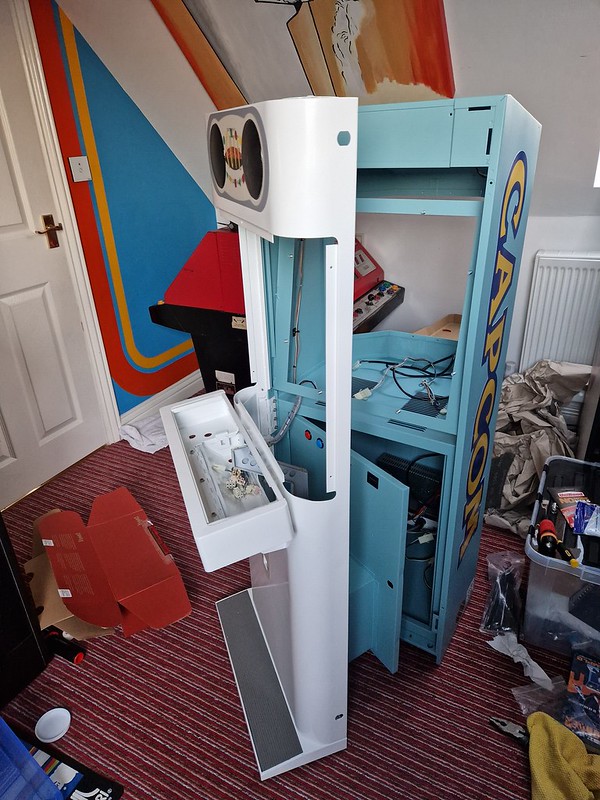 Here’s where we got up to with the Mini Cute restoration. Starting to look like an arcade cabinet again!
Here’s where we got up to with the Mini Cute restoration. Starting to look like an arcade cabinet again! So it was time to take a look at the plexi. This is a smoked piece of acrylic that sits in front of the monitor. In previous restorations, I would normally replace with a new sheet ordered from Trent Plastics here in the UK. The issue here is its shape. Replacements are difficult to come by and although not impossible to reproduce, getting that organised and executed would likely cost an arm and a leg. Luckily the plexi I had was in pretty good shape, so I decided to clean up and refresh what I had. Plus its a tick in the box for originality of course:
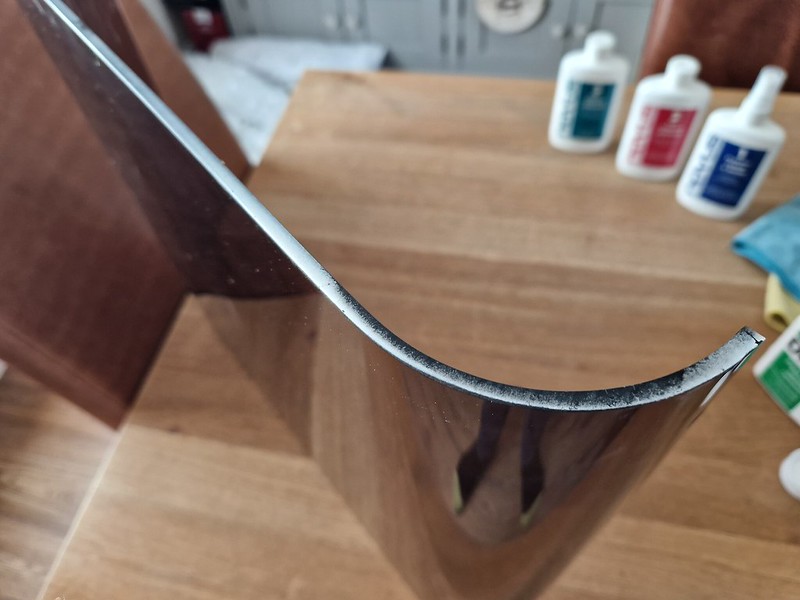 Here’s the first issue. There was some overspray from the white paint used when the cabinet was resprayed. I tackled this with a cloth and some paint remover. A lot of elbow grease required, but managed to get it all off
Here’s the first issue. There was some overspray from the white paint used when the cabinet was resprayed. I tackled this with a cloth and some paint remover. A lot of elbow grease required, but managed to get it all off 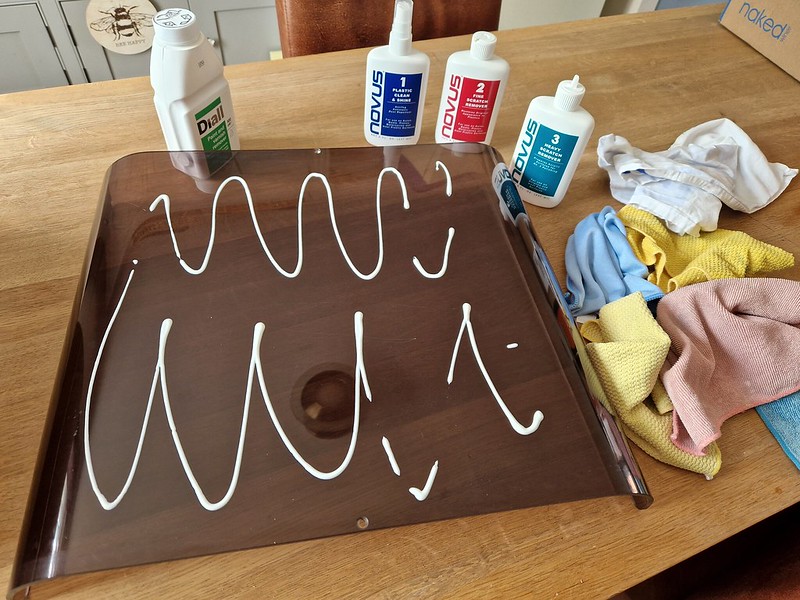 The plexi had a lot of fine and some deep scratches to it as you’d expect. To tackle these, I used Novus plastic polish. There are three stages to go through
The plexi had a lot of fine and some deep scratches to it as you’d expect. To tackle these, I used Novus plastic polish. There are three stages to go through 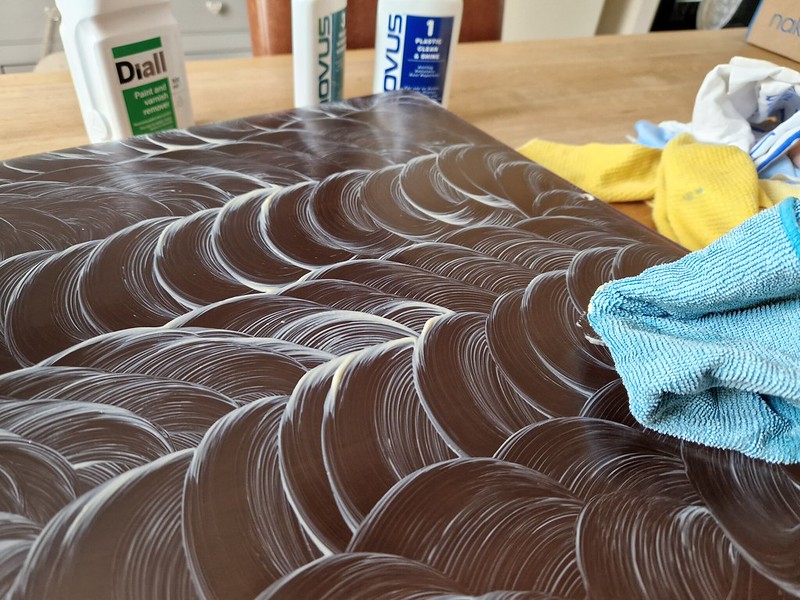 Starting with grade 3 polish I gave this a good 15 minutes, then moved onto stage 2 and finally stage 1. The results were very impressive.
Starting with grade 3 polish I gave this a good 15 minutes, then moved onto stage 2 and finally stage 1. The results were very impressive. So with the plexi looking like new again, I worked on some other parts which also had overspray. Again using a paint stripper compound, I used cloths to remove the paint from the monitor surround and loom. A long job, but well worth doing.
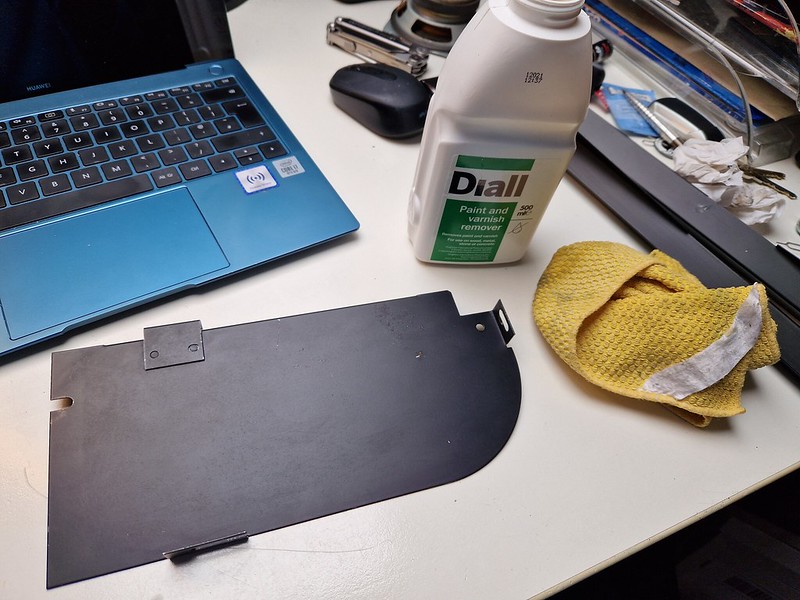 Timing was everything. You need to leave the product on for just long enough to remove the offending paint without damaging what’s underneath. But everything worked out OK with a bit of trial and error.
Timing was everything. You need to leave the product on for just long enough to remove the offending paint without damaging what’s underneath. But everything worked out OK with a bit of trial and error. Next up was the biggest issue I had with this cabinet, the control panel! You’ll recall this was missing, and had been replaced (badly) with a Sega Aero table control panel.
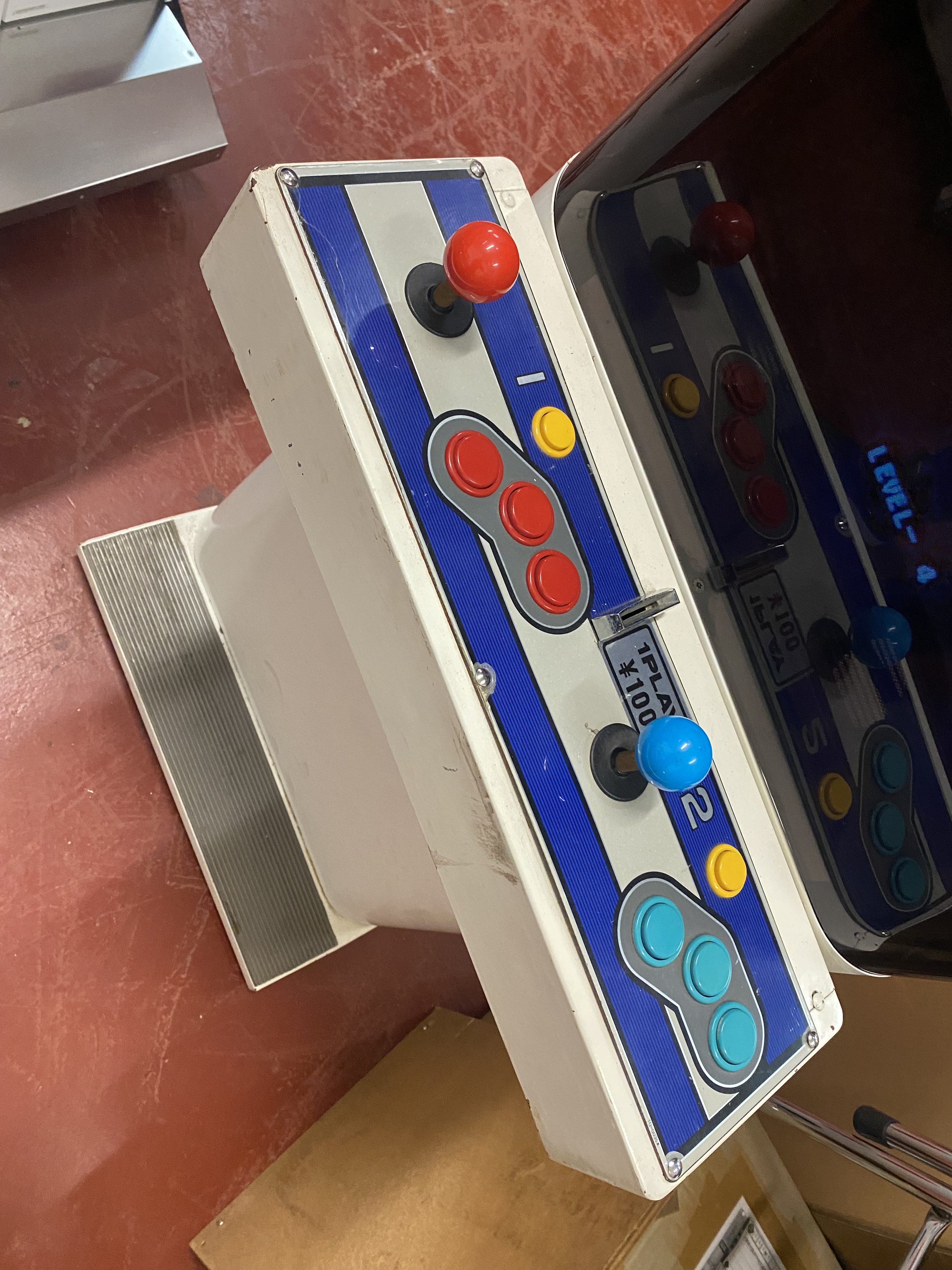 Urgh.
Urgh. Finding a replacement was hard work. I got a few leads from around the globe, but none were quite right or cost effective to purchase and ship. Eventually, I managed to do a trade with a UK based collector who was prepared to swap an original control panel for the chassis from the monitor that came with the cabinet. As I was replacing the monitor and so had no need to keep the chassis, this made sense to me. So after a drive to London, the deal was done – I was also able to secure a monitor shroud – something else missing from my cabinet.
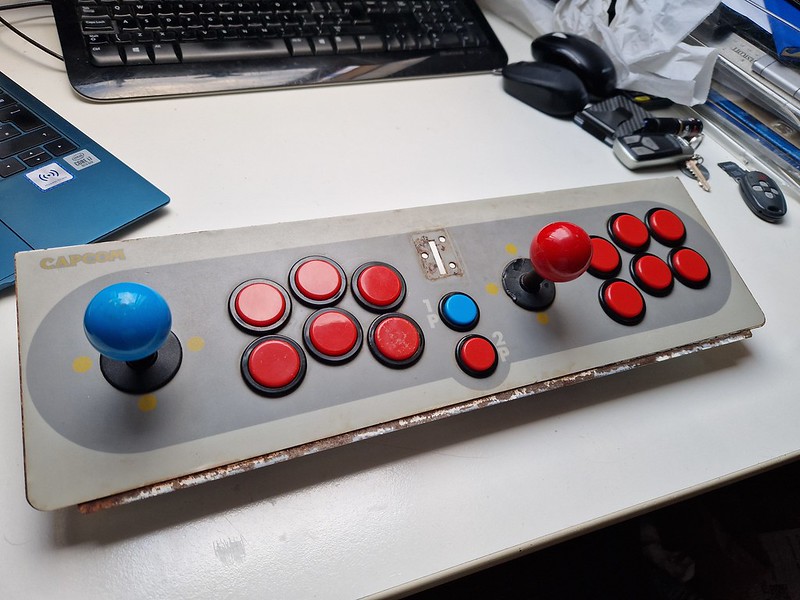 Here’s the panel as it came to me. Far from perfect, but it was complete and original!
Here’s the panel as it came to me. Far from perfect, but it was complete and original! 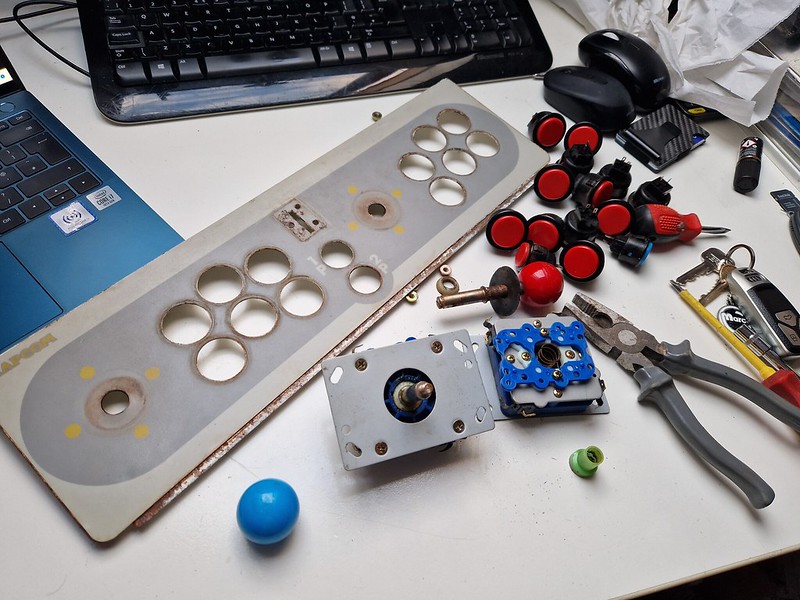 First job was to strip everything out. Removing buttons and joysticks
First job was to strip everything out. Removing buttons and joysticks 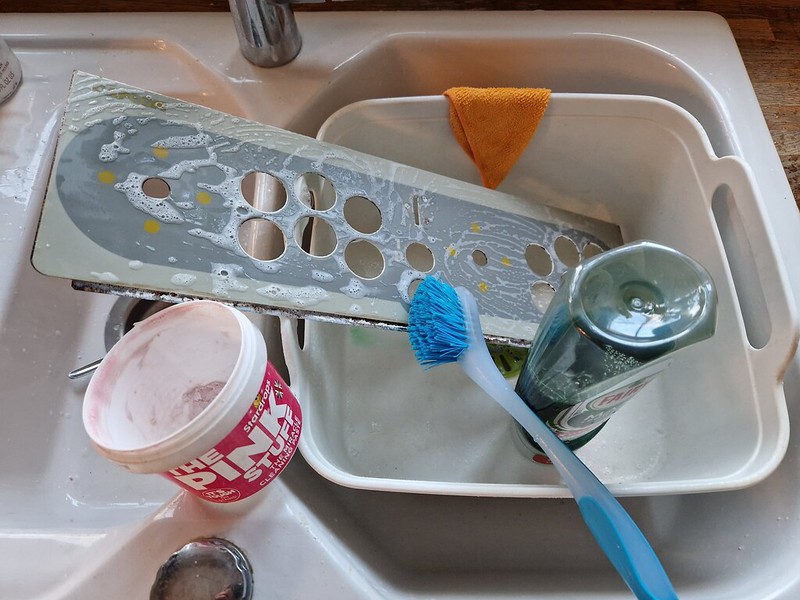 Into the sink with some hot water and detergent to remove the 30 year old gamer grime!
Into the sink with some hot water and detergent to remove the 30 year old gamer grime! 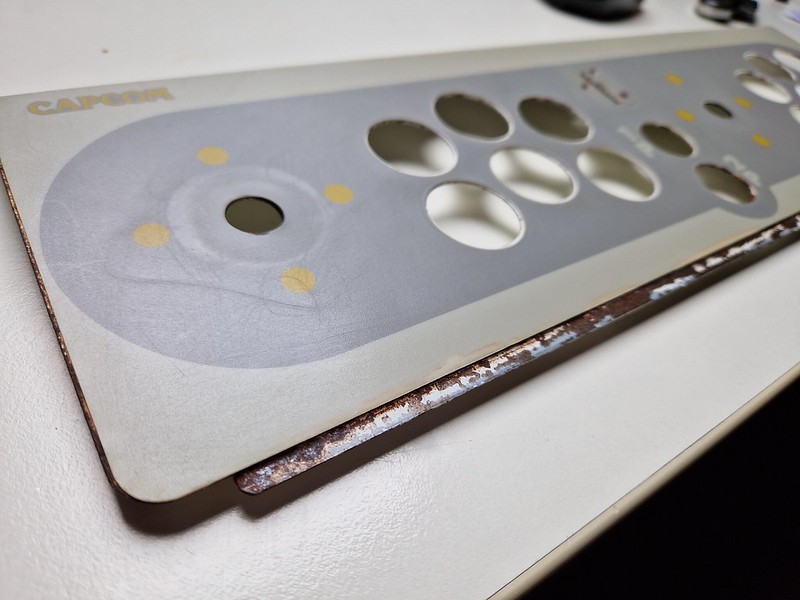 Here’s the result. A couple of decisions to make here. Replace the vinyl overlay or keep it? I wanted to repaint the rusty edges, which to do properly, would mean removing the original CPO. After much thought I decided to mask off the CPO and paint the edges by hand with white Hammerite paint, which meant I could keep some originality and replace the original artwork
Here’s the result. A couple of decisions to make here. Replace the vinyl overlay or keep it? I wanted to repaint the rusty edges, which to do properly, would mean removing the original CPO. After much thought I decided to mask off the CPO and paint the edges by hand with white Hammerite paint, which meant I could keep some originality and replace the original artwork So after carefully touching up the rust spots, I was able to rebuild the hardware and ended up with this:
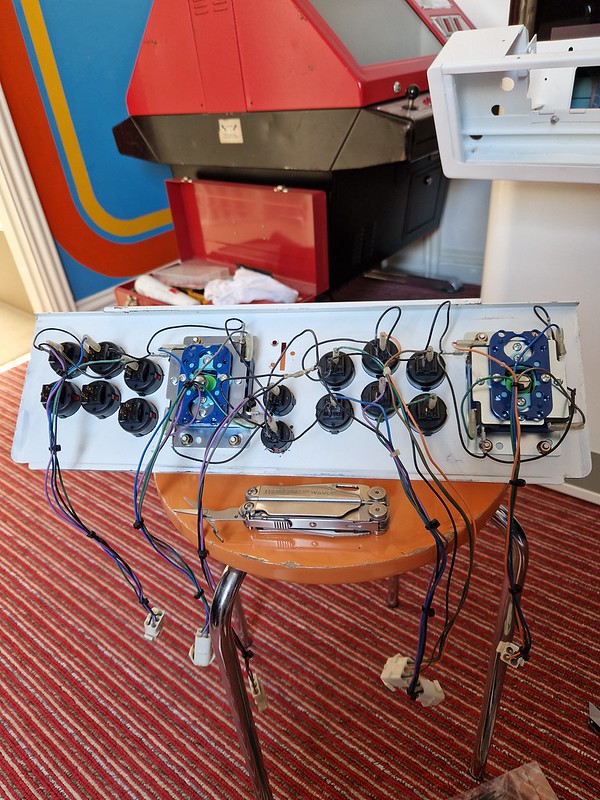 Rewiring underneath was not a fun job. Thankfully I had the original looms and connectors. I did find a break in the ground loop which needed tracking down and fixing, but got there in the end
Rewiring underneath was not a fun job. Thankfully I had the original looms and connectors. I did find a break in the ground loop which needed tracking down and fixing, but got there in the end 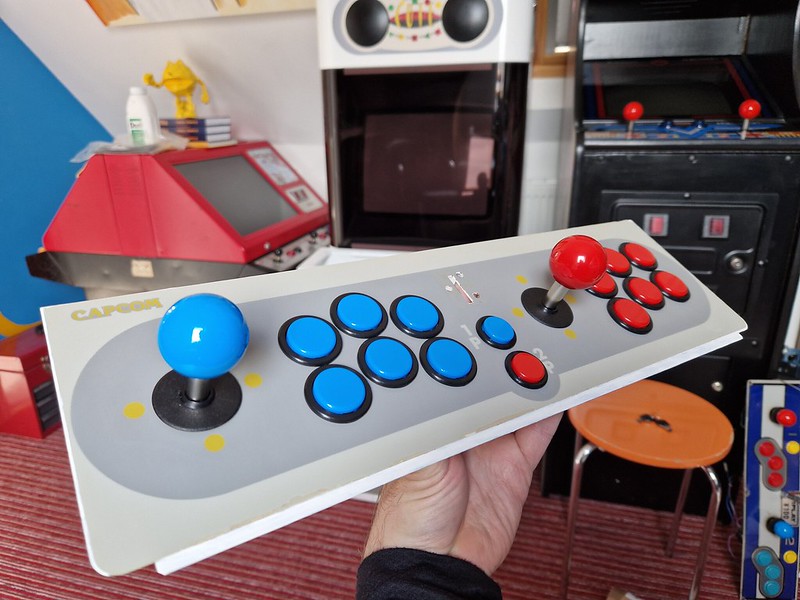 Here we go! Super pleased with how this turned out
Here we go! Super pleased with how this turned out So with this last piece of the puzzle sorted, it was time to mount the monitor. Now you’ll recall that the original monitor used in Mini Cutes is a very unusual one. The 18″ screen size is very difficult to find these days, as evidenced by the 19″ monitor that had been hacked into the cabinet when I got it. But I had a 17″ Hantarex lying around looking for a home, and decided to create new mounts inside the Cute, so I could utilise it in my cabinet.
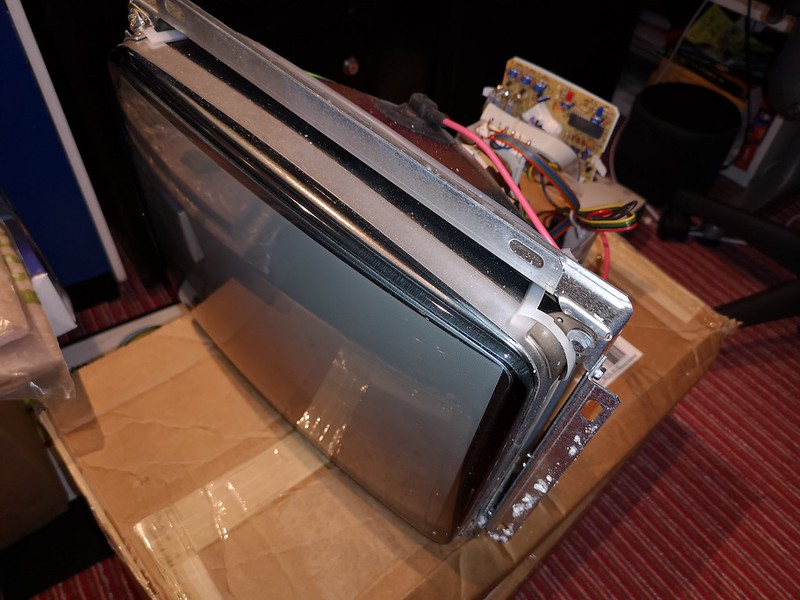 The brand new, never used, Hantarex monitor
The brand new, never used, Hantarex monitor 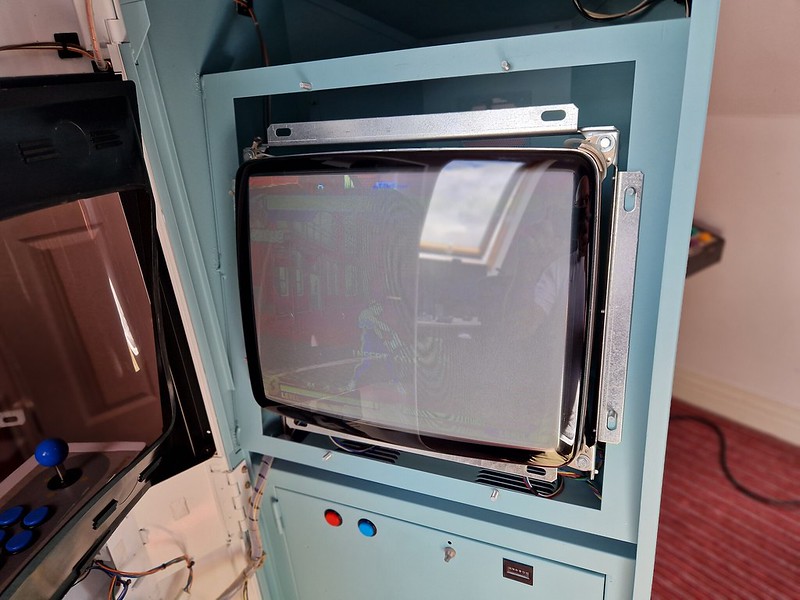
* This article was originally published here
* This article was originally published here







0 comments:
Post a Comment